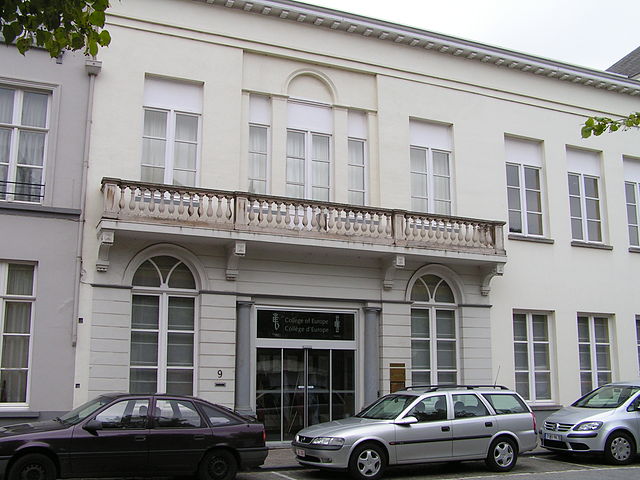Federalisation of the European Union
There is ongoing discussion about the extent to which the European Union (EU) has already turned from a confederation into a federation over the course of decades, and more importantly, to what degree it should continue to evolve into a federalist direction. As of January 2024, the EU has no formal plans to become a federation.
The College of Europe in Belgium was founded after the 1948 Hague Congress, a pivotal moment in European federal history that also led to the creation of the European Movement.
The Treaty on European Union, commonly known as the Maastricht Treaty, is the foundation treaty of the European Union (EU). Concluded in 1992 between the then-twelve member states of the European Communities, it announced "a new stage in the process of European integration" chiefly in provisions for a shared European citizenship, for the eventual introduction of a single currency, and for common foreign and security policies, and a number of changes to the European institutions and their decision taking procedures, not least a strengthening of the powers of the European Parliament and more majority voting on the Council of Ministers. Although these were seen by many to presage a "federal Europe", key areas remained inter-governmental with national governments collectively taking key decisions. This constitutional debate continued through the negotiation of subsequent treaties, culminating in the 2007 Treaty of Lisbon.

The Treaty of Maastricht, here shown at an exhibition in Regensburg. The book is opened at a page containing the signatures and seals of the ministers representing the heads of state of Belgium, Denmark, Germany and Greece
Stone memorial in front of the entry to the Limburg Province government building in Maastricht, Netherlands, commemorating the signing of the Maastricht Treaty



